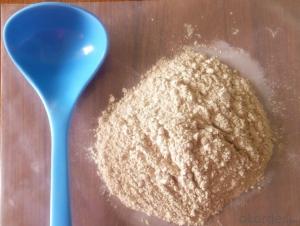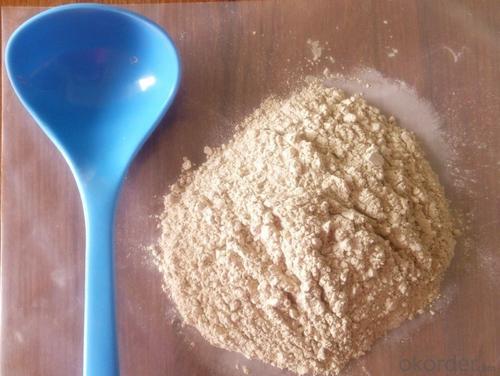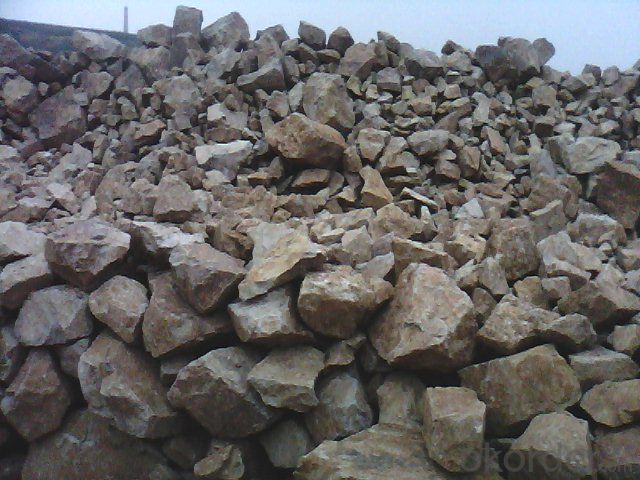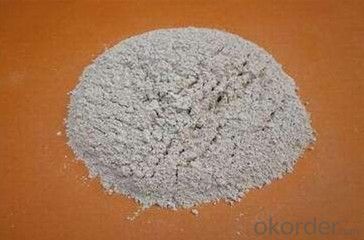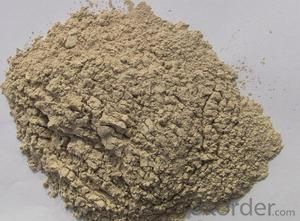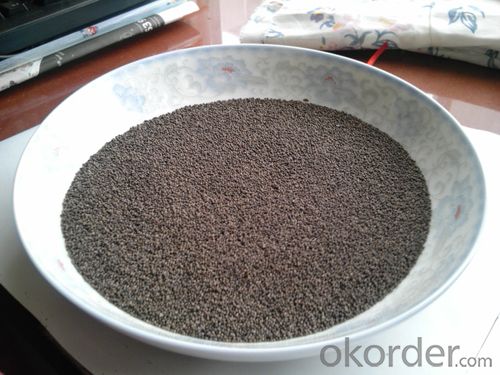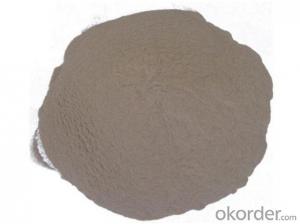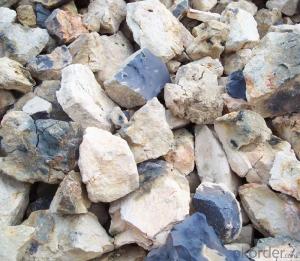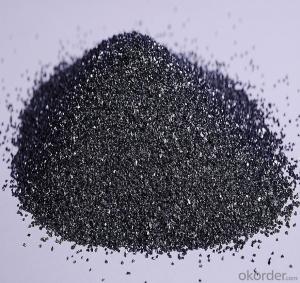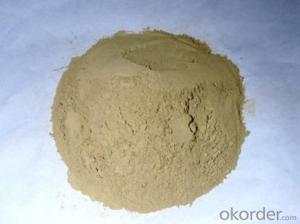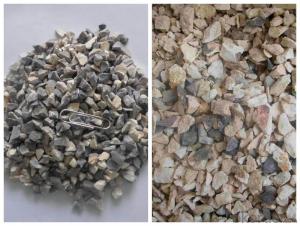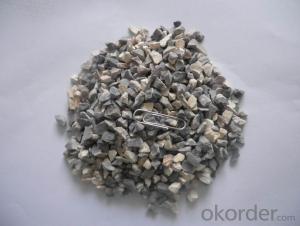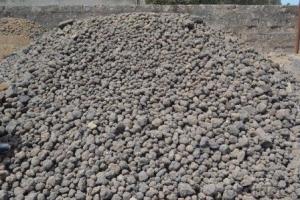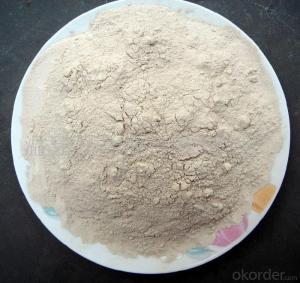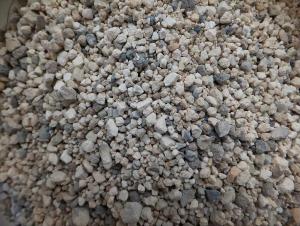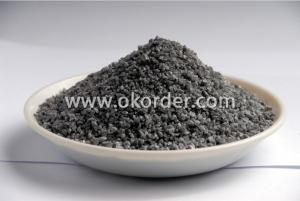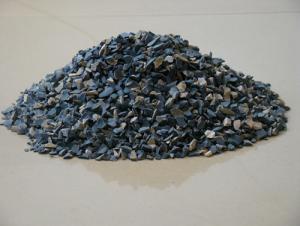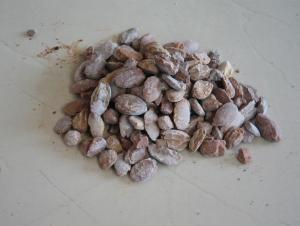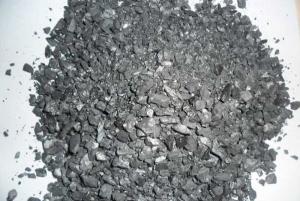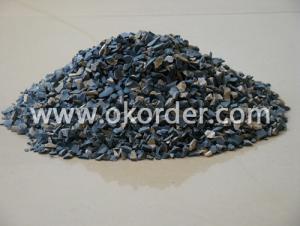Refractory Grade Calcined Bauxite 87% Powder
- Loading Port:
- Tianjin
- Payment Terms:
- TT OR LC
- Min Order Qty:
- 25 m.t.
- Supply Capability:
- 12000 m.t./month
OKorder Service Pledge
OKorder Financial Service
You Might Also Like
Refractory Grade Calcined Bauxite 87% Powder
Calcined Bauxite Introduction
Property | Specifications |
Name | aluminous soil ; bauxite |
Color | White, offwhite, auburnish yellow or light red (with Fe) |
Bulk Density | 2.55~3.6 g/cm3 |
Hardness | 1~3 |
Main usages | 1. Aluminium metallurgy 2.Refractory |
Calcined Bauxite Specifications
Grade | AL2O3 | FE2O3 | TIO2 | K2O+Na2O | CaO+MgO | Bulk density |
75 | 75min | ≤3.0 | ≤4.0 | ≤0.3 | ≤0.5 | ≥2.70 |
80 | 80min | ≤3.0 | ≤4.0 | ≤0.3 | ≤0.5 | ≥2.80 |
85 | 85min | ≤2 | ≤4.0 | ≤0.3 | ≤0.5 | ≥3.00 |
86 | 86min | ≤2 | ≤4.0 | ≤0.3 | ≤0.5 | ≥3.10 |
87 | 87min | ≤2 | ≤4.0 | ≤0.3 | ≤0.5 | ≥3.20 |
88 | 88min | ≤1.8 | ≤4.0 | ≤0.25 | ≤0.5 | ≥3.25 |
90 | 90min | ≤1.8 | ≤4.0 | ≤0.25 | ≤0.5 |
Calcined Bauxite Applications
1. Refractory: high alumina bauxite’s refractoriness can reach 1780°C.
It is charactered by good chemical stability and mechanical performance. (Al2O3 ≥48% with low Fe2O3)
2. Aluminium silicate refractory fiber: The high alumina bauxite grog can melt under 2000°C-2200°C in the electric arc furnace.After a series of processing, it can become aluminium silicate refractory fiber,
which can be made into fiber blanket, plate,cloth.
3. Mixing magnesia and bauxite grog with binders to pour the molten steel ladle for better overall lining
performance.
Pictures:
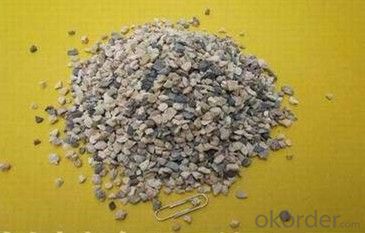
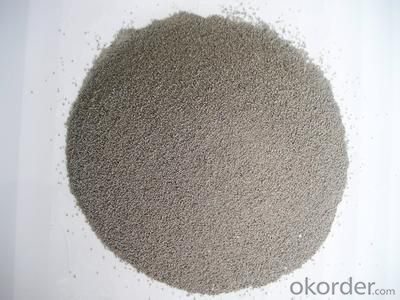
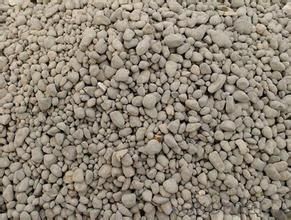

- Q: What advantage and disadvantages it has compared to common fire insulation materials
- Main advantage of A-level fire proof heat retaining plate is A-level non-conbustibility. Now residential areas strictly require the external walls to be high-level fire proof, to be specific, high fire resistance, non combustible. Standards for evaluation varies according to different types, which includes anti-corrosion, acid and alkali resistance, waterproof, anti termites and so on. Disadvantage is the insulation effect is quite ordinary. It will absorb water, get deformed, need some water prevention measures after constrcuting thermal insulating layer for it. Its thermal conductivity far below the benzene plate, and plastic extruded palte, half the thickness of the polyurethane insulation layer can reach heat perservation effectiveness of the benzene plate and extruded plate of the same thickness.
- Q: Who can introduce the difference between galvanized fireproof?coatings and steel structure fireproof materials?
- There is no difference between them because they are the coating with the same texture. But generally galvanized treatment is not necessarily needed for brushing fireproof coating. Fireproof coating and galvanized surface have relatively poor bond strength. So it is advisable to bursh trasitional lacquer or micaceous iron on galvanized surface.
- Q: What refractory material does cupola lining use?
- In order to improve the service life of the lower wall and the bottom leather, dense and high alumina brick can be used for masonry. The front furnace is composed of the bottom, the wall and the top. The top of the furnace is vaulted or hanging flat roof. The front furnace body is usually made of clay brick and high alumina brick, and the bottom work floor is rammed with ramming material. The material is the same as that of cupola furnace. The bridge and the front guard taphole, slag hole and other parts due to erosion by high temperature molten iron and slag erosion, lower service life, frequent repairs. Large blast furnace adopts hot blast or oxygen enriched blast, which has higher temperature and higher production capacity... The damage is faster, and it is hard to maintain production by using clay brick or high alumina brick. Should be used aluminum, carbon or corundum refractory silicon carbide castables pouring or tamping, so that the integrity of good, high strength, corrosion resistance, and therefore significantly improved service life, generally up to one year or so. Refractory materials, including chimneys and spark traps, are used in other parts of the cupola. The chimney and the cupola shaft directly connected with the shell made of steel plate, lined with ordinary clay brick, can also be used ordinary refractory castable pouring. The chimney is provided with a furnace heat exchanger, which can preheat the air to 300~500 DEG C, and the spark collector is used for catching the hot coke and dust particles brought out in the flue gas. The chimney at the top of the reflector (cover) by plate welding, can also be used to cast iron, its lining refractory coating or spraying paint.
- Q: I wanna ask what are the acidic refractories?
- You can look at these: (1) silica?brick with stronge acidity, unshaped silicious refractory, quartz glass and fused silica combined products; (2) semi-silica refractory with moderate acidity and pyrophyllite refractory; (3) clay-based refractory with weak acidity. I hope it is useful!
- Q: What are the characteristics of clay refractory materials?
- Refractory clay refers to the refractory clay and bauxite, whose refractoriness is over 1580℃, which can be used as refractory materials. Apart from high refractoriness, they can maintain stability of volume under high temperature conditions and has resistance to slag, the sudden cold and hot, and mechanical strength, so after calcination, it can be abnormal firm.
- Q: what needs to be noted when choosing and using blast furnace fireproof materials?
- Hello,: three parts of the blast furnace lining in general are easily corroded. The first one is furnace bosh,second is the middle part of the furnace, The third is lower part of the furnace stack. if These parts are damaged, then we need an overhaul. Bosh, because damage to the middle part of the furnace and the furnace bosh are generally due to alkali metal and fusant erosion. the main reason for the lower furnace part damage is molten iron, slag. In view of this situation, mullite bricks, corundum bricks, silicon carbide bricks are used for reparation. make repairments as soon as possible if any problems occur in case of incidents.
- Q: which is better as household fireproof material ?
- the thickness recommended is 1mm or more # 304 stainless steel plate, refractory corrosion-resistant, easy to clean. It now appears that among the most common fireproof material, asbestos is the best. But the asbestos harmful effect is also great, especially for lung damage. Now on the market, the polyurethane, polystyrene, rock wool glass wool, phephenolic aldehyde fireproofingthermal insulation board. But now the phenolic aldehyde fireproofing thermal insulation board has superior performance! phenolic aldehyde containing only carbon, hydrogen and oxygen atoms, when subjected to pyrolysis, except small amounts of CO gas, the other will not produce toxic gases, maximum smoke density is 5.0%.
- Q: How many types of fire-resistant material?
- 1. Acid fire-resistant material refers to one with more than 93% SiO2. It is featured by resistance to the corrosion of acidic slag ad high temperature and easy to react with alkaline molten slag. 2. Alkaline refractory material generally refers to one with magnesium oxide or magnesium oxide and calcium oxide as the main component. It has high refractoriness and strong resistance to basic slag. 3. Silicate aluminum refractory material refers to one with SiO2, Al2O3 as the main component. According to the content of Al2O, it can be divided into three categories: half siliceous (15-30% Al2O3), clay (Al2O3 30 ~ 48%), high aluminum (more than 48% of Al2O3). 4. Fused cast refractory material refers to shaped refractory products made by high temperature melting and casting.
- Q: What is the fireproofing requirements of external wall thermal insulation materials?
- External wall thermal insulation materials fire rating regulations, 1, the height of a building is greater than or equal to 100m , the combustion performance of insulation materials should be level A; 2, the height of a building is greater than or equal to 60m but less than 100m, the combustion performance of insulation materials should not be less than the level B2. When using level B2 thermal insulation material, every layer should set horizontal fire barrier zone 3,The height of building is be equal or greater than 24m but less than 60m, the combustion performance of thermal insulation material should not be less than the level B2. When using level B2 insulation material, each two-layer should set fire barrier zone ; 4, the height of building is less than 24m, the combustion performance of insulation materials should not be less than the level B2. Besides, when using level B2 thermal insulation material, each three-layer should set a horizontal fire barrier zone.
Send your message to us
Refractory Grade Calcined Bauxite 87% Powder
- Loading Port:
- Tianjin
- Payment Terms:
- TT OR LC
- Min Order Qty:
- 25 m.t.
- Supply Capability:
- 12000 m.t./month
OKorder Service Pledge
OKorder Financial Service
Similar products
Hot products
Hot Searches
Related keywords
